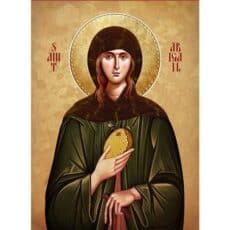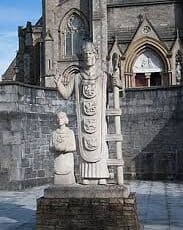
Butch O’Hare
Edward “Butch” O’Hare was of Irish decent born on 13 March 1914 in Missouri. His dad, Edward Joseph “EJ” O’Hare was an attorney. EJ was familiar with firearms and spent time with Butch training him with guns. EJ was also a pilot and had flown with Lindberg on his mail flights. When he had a mail route of his own, he brought Butch aboard on some of the flights. As a result, Butch learned two valuable skills that would later help him in the Pacific. Flying and gunnery would rule his life.

EJ O’Hare and son Butch
After his parents’ divorce Butch moved to Chicago with his dad who joined Al Capone’s mob working as Capone’s lawyer. In March 1931 Capone was indicted for income tax evasion. EJ wanted to sever his connection to the mob for several reasons including the fact that his family was in danger from the mob. He contacted IRS Agent Frank J. Wilson and offered to testify against Capone. Wilson would later say that EJ provided valuable insider information, without which Capone would not have been convicted. Capone was sentenced to five years in prison.
In 1932 Butch was a senior at Western Military Academy. He was less than lukewarm about attending a service academy, but EJ wanted him to attend and continued pressure on Butch. He even pushed his daughters to persuade Butch. EJ needed to get an appointment to a service academy for Butch and he contacted Congressman John J. Cochran. EJ’s assistance to the government in the Capone case may have been a topic of discussion since he was negotiating with Wilson at that time. EJ got Cochran’s appointment for Butch to the Naval Academy (each Congressman was allotted two appointments to a service academy).
Butch entered the Naval Academy and graduated in 1937. His first assignment was on the battleship USS New Mexico, and he started flight training in 1939. 1939 was a pivotal year: World War II started in Europe, EJ’s legal career was doing well and Butch was in flight training. Capone was also scheduled to be released from prison. The mob decided it was time for payback. A week before Capone’s release on 8 November 1939, a car pulled alongside EJ as he drove to work and two gangsters pumped shotgun slugs into EJ. He died instantly and his car crashed into a pole. Butch was in Pensacola, Florida and took leave to return to St Louis and attend EJ’s funeral with the family.

EJ’s Lincoln after the Crash
The U.S. entered World War II after the Pearl Harbor attack on 7 December 1941. Butch was assigned to an aircraft carrier, the USS Lexington. On 20 February 1942 during the U. S. raid on Rabal, O’Hare shot down five of the bombers attacking the Lexington becoming the first U. S. ace of World War II. He was credited with saving the Lexington from severe damage in his Medal of Honor citation. Two months later the Lexington and the Yorktown carriers were available to engage the Japanese fleet at the Battle of the Coral Sea. The battle was a resounding defeat for Japan and turned the tide of the war in the Pacific. Later, the Lexington did not survive the battle and sank on 8 May 1942 after multiple torpedo hits. O’Hare was not on-board at that time but had been reassigned to recruiting duty after receiving the Medal of Honor. In November 1943 he was on-board the Enterprise and was killed defending that ship against attacking Japanese aircraft. He was posthumously awarded the Navy Cross for his valor in that action. These awards plus the two Distinguished Flying Crosses he was awarded make Butch O’Hare one of the most decorated officers in World War II.
So, if you fly into Chicago as you’re circling O’Hare International the pilot may tell you about the origin of the airfield name, but I don’t think he’ll mention Al Capone.
Mike Eggleston




